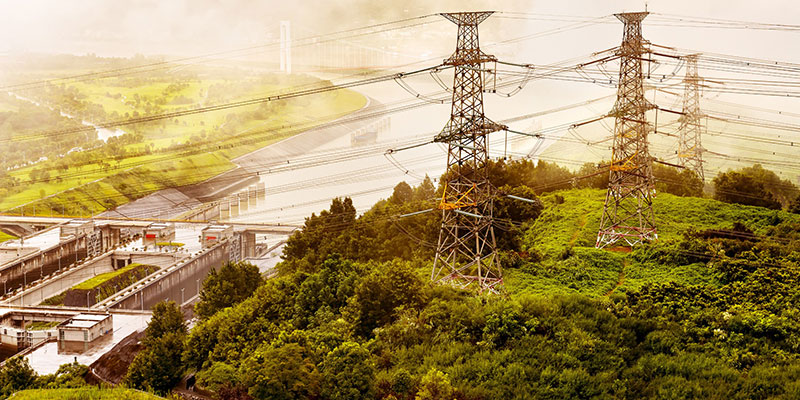The Three Gorges Dam on the Yangtze River is just one example of China’s huge water management projects. There is room around the country for smaller infrastructure too, in the form of modular treatment plants placed just where they are needed.
Hydropower crisis and climate change prompt new water projects
This year’s record heat wave in China has dried up large swaths of the Yangtze River basin, and the drought has caused a continuing hydropower crisis in the southwest. The drought is affecting groundwater and agriculture. It is estimated that 80% of China’s groundwater is contaminated with toxins, including heavy metals and arsenic. Estimates show that 20% of Chinese agriculture might be affected.
China has quickly responded with investment in massive new water infrastructure projects to mitigate extreme climate impacts, and smaller, greener ─ and some would say better ─ strategies also have been taking hold.
Huge Investment in Water Infrastructure
Large-scale storage and transfer projects were already in process. Some 25 projects worth 1.7 trillion yuan (about $246 billion) have been approved by the Ministry of Water Resources. In central Hubei Province, construction began on 18 projects with plans to invest 176 billion yuan between 2021 and 2025. In Yunnan Province, ground was broken on four large-scale water storage projects worth 211.8 billion yuan.
All of the new investment is added to ongoing construction of a 200-kilometer (124-mile) tunnel, the South-North Water Transfer Project. China has never balked at large river control projects like the colossal Three Gorges Dam. More hydropower plants in Tibet could take advantage of ice melt to capture seasonal water flows, and China’s energy bureau has promised to expedite several dam projects in the upper Yangtze basin.
Yet, some warn that there may be a limit to the problems traditional engineering can solve. Large-scale projects are expensive and face unpredictable weather conditions, and can harm the environment. China also faces this paradox: Drought preparation requires a great deal of water to be stored, yet to prepare for flooding, a great deal of empty storage capacity is needed.
Zhou Jinfeng of the China Biodiversity Conservation and Green Development Foundation said, “Water engineering projects are neither the best solution, nor the only solution.”
Solutions like the “Sponge City” model are taking root in China, where natural features like terraces and green walls are used to increase drought and flood resilience. Decentralized treatment, placing smaller-scale infrastructure at the point of need, also has been deployed successfully in China.
For instance, in Hubei Province in central China, Fluence’s Aspiral™ modular wastewater treatment plants are being used at highway service areas, placed at 50-kilometer intervals. Decentralization enables treatment in remote areas without building long, economically burdensome pipe networks or regularly removing sewage with tanker trucks.
While the modular plants in Hubei are independent, they are centrally managed and operated as part of a distributed system. Aspiral™ units are also manufactured in Jiangsu in standard shipping containers, ready for quick delivery throughout China.
One Fluence Aspiral™ plant in remote Taiping Village, in Henan Province, was installed and commissioned in only 10 days. While Aspiral™ treatment prevents further contamination of water resources, the plants maximize every drop of scarce water. The effluent can be discharged into depleted surface or groundwater or used in many nonpotable applications, including agricultural irrigation.
Contact our experts to learn how an array of smaller, decentralized plants can handle the same capacity as large-scale infrastructure, with lower capital and operating expenditures.

